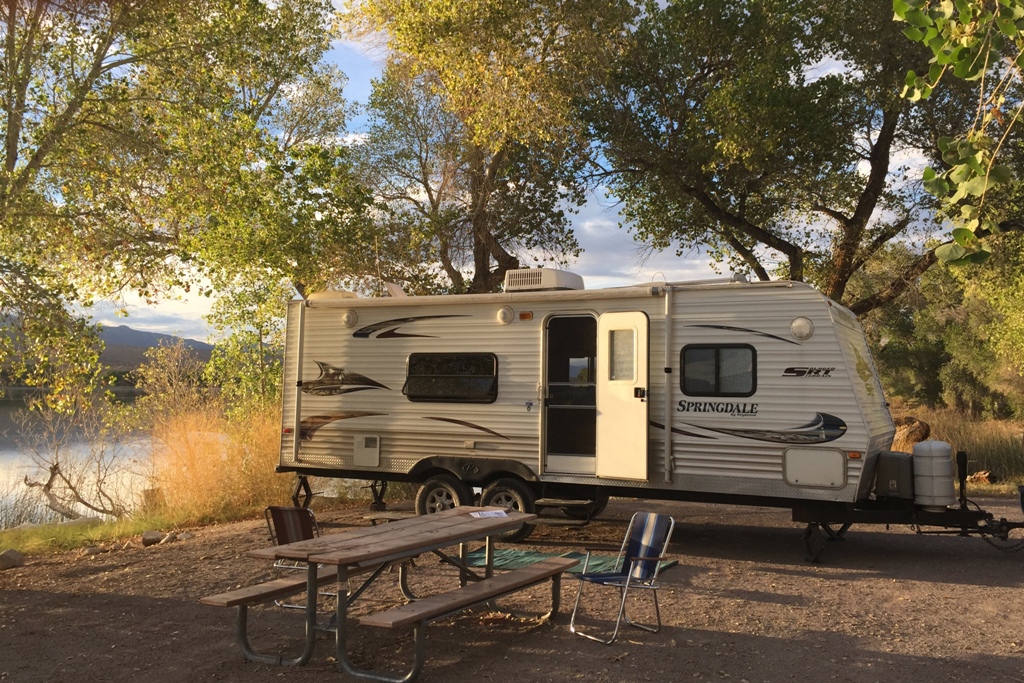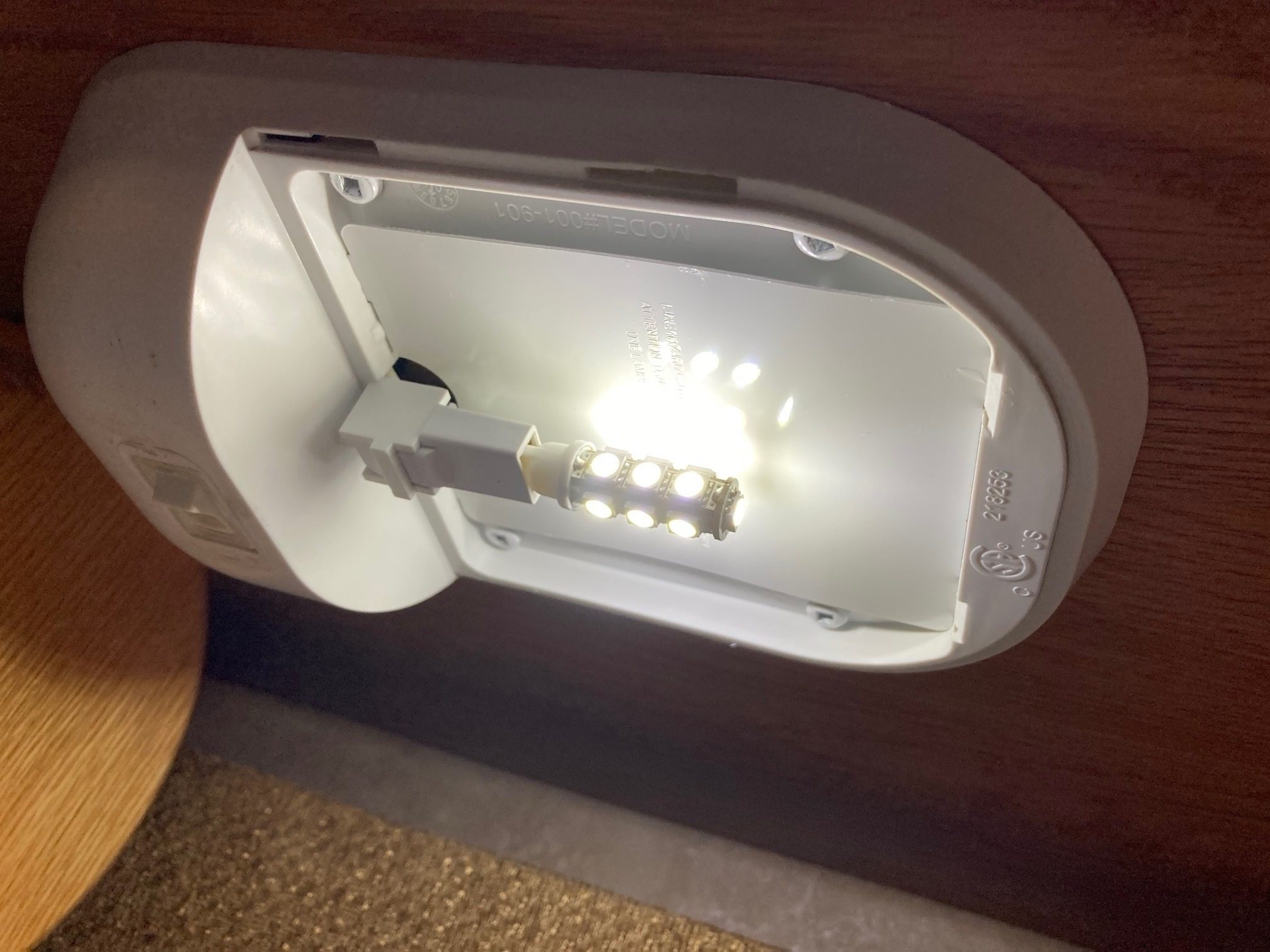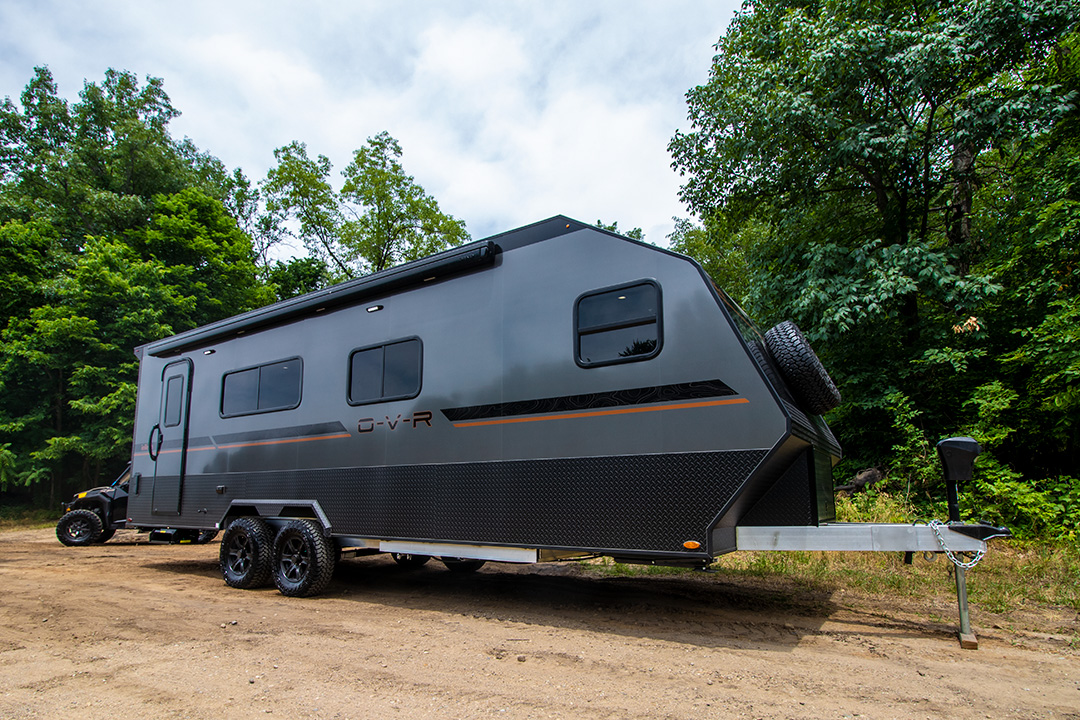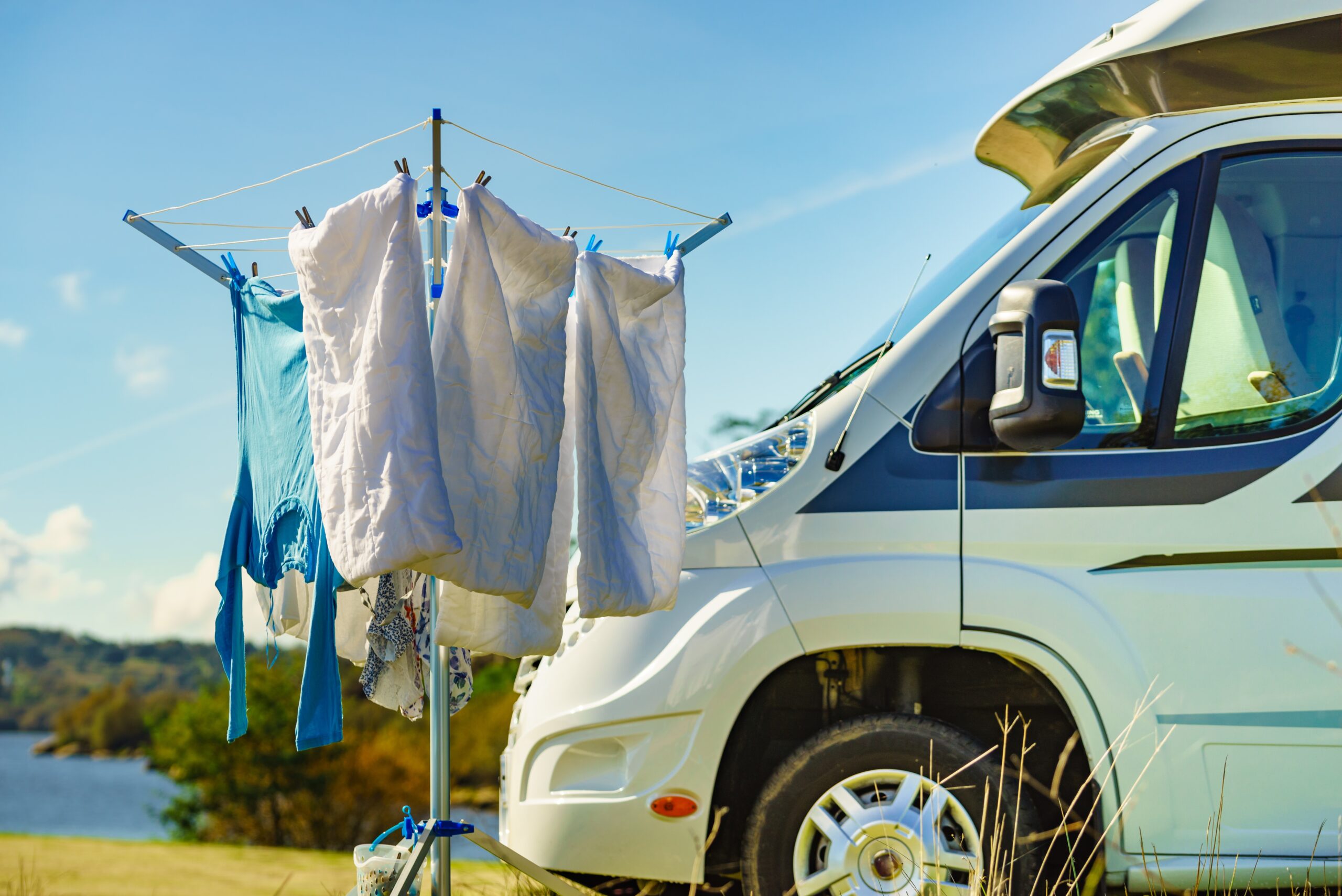
The Top Off Grid Boondocking Lessons from an Expert
Are you considering becoming a dry camper as full hookup RV spaces are becoming more expensive and harder to reserve? Of course you are. Try out some of these dry camping tips we’ve learned over our years of experience in boondocking off-the-grid.
“If you are not used to RVing without hookups, dry camping may seem like quite a daunting task. However, with a few considerations and some planning ahead, you can become a dry camping pro in no time.” – Sam Leash
1. Start by camping at home in your driveway or at a campground where water and power are readily available.
How does this apply to dry camping tips you ask? By practicing living off your tanks and batteries, you will get a good idea how long you can survive without hookups.
If you find yourself without water or with a dead battery in the middle of a cold night while practicing your dry camping skills, you can quickly remedy the problem with little inconvenience. Once you are comfortable with your dry camping prowess, then wean yourself from hookups and head to your first dry camp.
As you learn to dry camp, you will soon discover dry camping tips revolve around conservation.
2. Take sailor showers to conserve water.
This can be done by turning off the water while you are lathering up soap and shampoo, then turning it on just to rinse. It saves a significant amount of water, allowing you to dry camp for longer.
3. Install a water saving showerhead.
Learn more about some of our favorite RV showerheads here.
4. Purchase a 5-gallon collapsible water container with a spigot or two.
Set one of these full of water on the edge of a picnic table or tailgate and you have an instant outdoor hand washing station. They can also be used to haul water from the communal campground spigot, and with the help of a short length of hose, replenish the potable water tank in your RV via the gravity fill.
5. Use paper plates and disposable plastic silverware in place of plates and silverware that need washing.
Start the evening campfire using the paper plates to save space in your trash can. Note that while paper is a renewable resource, plastic is not. Ideally you would separate the two and recycle the plastic at the first opportunity.
6. Cook meals ahead of time at home and freeze them.
This saves the water that would have been required to wash the pots and pans at camp.
Bonus tip: Learn how to calculate your daily water usage while camping.
7. Place a dishpan in your sink when doing dishes.
When finished, pour the waste water on a thirsty bush (legal most everywhere) like tent campers do or down the black tank as the black tank is always the last to fill.
8. Use your outdoor shower whenever you are able to.
Examples: Wash the kids’ sandy feet, the BBQ grill, or yourself. Be kind to the environment by using biodegradable soap.
9. Install LED bulbs.
Install LED bulbs in your ceiling lights in place of incandescent bulbs, which consume ten times more power from your batteries.

10. Consider an alternative heat source when dry camping.
The fan in your RV’s furnace gobbles up plenty of power from your batteries.
11. Use a power inverter.
Without shore power, many RVers will utilize a large inverter to power their 120 volt gadgets like a toaster or coffee maker which will quickly consume the house batteries. Consider these non 120 volt alternatives instead.
12. Throw food packaging away at home.
Much of the garbage you generate while camping is from food packaging. If you will be dry camping where garbage service is not available, consider “un-packaging” your food at home and store it in reusable containers like Tupperware.
13. Utilize public toilets to conserve space in your black tank.
In most cases you will run out of freshwater or grey tank space long before you ever fill your black tank. However, if you find this is a problem when dry camping, consider using the toilets available in the campground, or if you are out in the boondocks, you can always go where the bears go!
14. Know the rules for the area where you are camping.
Campground rules are easily found as they are typically posted on site. To find the rules for boondocking, perform an online search using the name of the land agency and “dispersed camping rules”. For example, “Fishlake National Forest Dispersed Camping Rules”. Rules you will want to be aware of include disposing of dishwater, campfires, length of stay, firewood gathering, finding a site, etc.
15. Know where to obtain potable water.
Campgrounds will typically have potable water available via a communal spigot. Carry a water bandit type device in the event the spigot is not threaded to accept your potable water hose. Here is a list of potential places to find potable water on your way to, or between, boondocking campsites.
As a courtesy to others, quickly fill your water tank and move on. Here is a do it yourself modification that will allow you to fill your tank much faster than the gravity fill found in most RVs.
Need some additional encouragement before heading out on your first dry camping experience? This video will help avoid dry camping mistakes and alleviate any anxiety you may be experiencing:
For more dry camping tips, check out our previous article on How To Become A Better Dry Camper.



